I had the pleasure of speaking to the assembled delegates at the opening ceremony of the Port Townsend High School 2015 Model United Nations General Assembly. They were dressed and polished for the event as they marched in, each delegation accompanied by appropriate national music.
I spoke to them about working together. Here are some excerpts:
In 1987 I arrived in Addis Ababa, Ethiopia to head the Political and Economic Section of the U.S. Embassy. Our overriding goal was to get aid to northern Ethiopia, then entering a devastating drought. But only a few months  after I arrived we started receiving horrifying reports of Sudanese children near starvation crossing into Ethiopia on its remote Western border. Children came in their thousands, mostly boys, mostly ten years old or younger. Civil war between the Government in the North and the rebels in South Sudan had been raging for years, but now government troops and planes were wiping out whole villages.
after I arrived we started receiving horrifying reports of Sudanese children near starvation crossing into Ethiopia on its remote Western border. Children came in their thousands, mostly boys, mostly ten years old or younger. Civil war between the Government in the North and the rebels in South Sudan had been raging for years, but now government troops and planes were wiping out whole villages.
 In Sudan, pre-adolescent Sudanese boys are responsible for herding cattle, living with their animals, away from their village. They were often the only ones left alive after a government attack. They walked for weeks and some for months, living off bugs, grass, whatever they could scavenge. Many died from animal attacks, from drowning in the rivers they had to cross, from disease or starvation. Many of the boys also carried their younger sisters or brothers. They arrived in Ethiopia as skeletons, some too weak to eat.
In Sudan, pre-adolescent Sudanese boys are responsible for herding cattle, living with their animals, away from their village. They were often the only ones left alive after a government attack. They walked for weeks and some for months, living off bugs, grass, whatever they could scavenge. Many died from animal attacks, from drowning in the rivers they had to cross, from disease or starvation. Many of the boys also carried their younger sisters or brothers. They arrived in Ethiopia as skeletons, some too weak to eat.
What to do?
Once international aid had been committed, representatives of the United Nations High 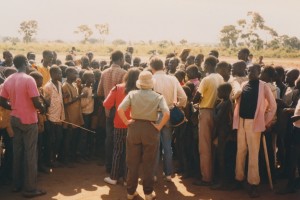 Commission for Refugees, the World Food Program, World Health Organization, Unicef and donor countries worked together frantically in Addis Ababa on the Refugee Task Force, to overcome the many obstacles to getting help to the children.
Commission for Refugees, the World Food Program, World Health Organization, Unicef and donor countries worked together frantically in Addis Ababa on the Refugee Task Force, to overcome the many obstacles to getting help to the children.
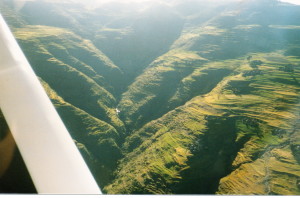 Transporting food and medicine from the Red Sea ports to Ethiopia’s Western border meant crossing the entire country, over mountains, on barely passable roads. Ethiopia was also in the midst of a civil war and the truck convoys were vulnerable to attack – often by underfed, underpaid Ethiopian government troops. Being a truck driver was a very dangerous
Transporting food and medicine from the Red Sea ports to Ethiopia’s Western border meant crossing the entire country, over mountains, on barely passable roads. Ethiopia was also in the midst of a civil war and the truck convoys were vulnerable to attack – often by underfed, underpaid Ethiopian government troops. Being a truck driver was a very dangerous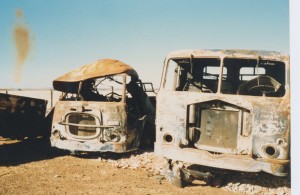 occupation, and many were lost. One of our jobs was to cajole, threaten or shame the Marxist Ethiopian government into stopping those attacks.
occupation, and many were lost. One of our jobs was to cajole, threaten or shame the Marxist Ethiopian government into stopping those attacks.
Once the food started arriving, miracles happened. The resilience of the children was breathtaking. By the time I took these pictures, a couple of months later, those near death walking skeletons, were laughing, singing, 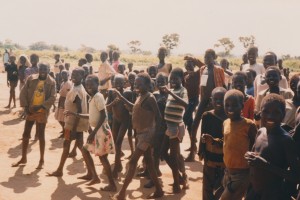 soccer playing kids.
soccer playing kids.
Working together.
Just a few months later, the government of Somalia bombed Hargeisa, Somalia’s second biggest city, in response to a clan uprising. 400,000 Somali’s, mostly city dwellers, fled across Ethiopia’s eastern border – – into the desert, into nothingness. No trees, no shelter, no food, and most urgently, no water. Again the Refugee Task Force was faced with huge challenges. UNHCR, other UN agencies, donor countries and NGOs including Save the Children, CARE and Oxfam mobilized. How to sustain so many in the desert? We organized a fleet of 60 tankers to bring water, round-the clock, from Jijiga, 60 km. away. No one died of thirst.
Working together.
Just beyond Norway’s northern most border, above the Arctic Circle, lies the city of Murmansk, Russia – home to Russia’s Northern fleet of nuclear submarines. Now the graveyard for dozens of them.
In 1995 I was assigned to the U.S. Embassy in Oslo, Norway as Deputy Ambassador. The Cold War was over, Russia 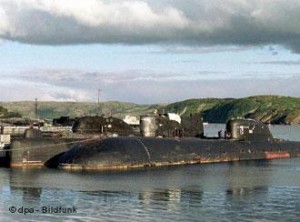 was strapped for cash, and there were 100 Soviet era nuclear submarines rotting in Murmansk harbor, waiting to be decommissioned. Recently the electric power to one of them had been cut off and a meltdown barely averted. Norway was scared, with good reason. Russia had already scuttled 20 old subs in Arctic waters and Norway feared for its billion dollar fishing industry, among other concerns. The Norwegians came to us proposing a joint effort to address this disaster in the making. The U.S. Environmental Protection Agency was interested as was the Defense
was strapped for cash, and there were 100 Soviet era nuclear submarines rotting in Murmansk harbor, waiting to be decommissioned. Recently the electric power to one of them had been cut off and a meltdown barely averted. Norway was scared, with good reason. Russia had already scuttled 20 old subs in Arctic waters and Norway feared for its billion dollar fishing industry, among other concerns. The Norwegians came to us proposing a joint effort to address this disaster in the making. The U.S. Environmental Protection Agency was interested as was the Defense 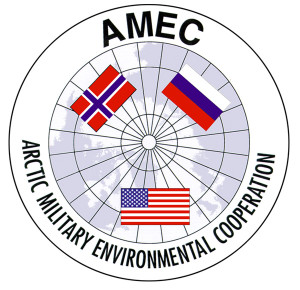 Department. After a year of negotiation, the Arctic Military Environmental Cooperation pact was signed by the U.S., Norwegian and Russian defense ministers. Norway supplies money, Russia supplies personnel and the U.S. supplies technical support and funds.
Department. After a year of negotiation, the Arctic Military Environmental Cooperation pact was signed by the U.S., Norwegian and Russian defense ministers. Norway supplies money, Russia supplies personnel and the U.S. supplies technical support and funds.
It is a start.
Working together.

Leave A Comment